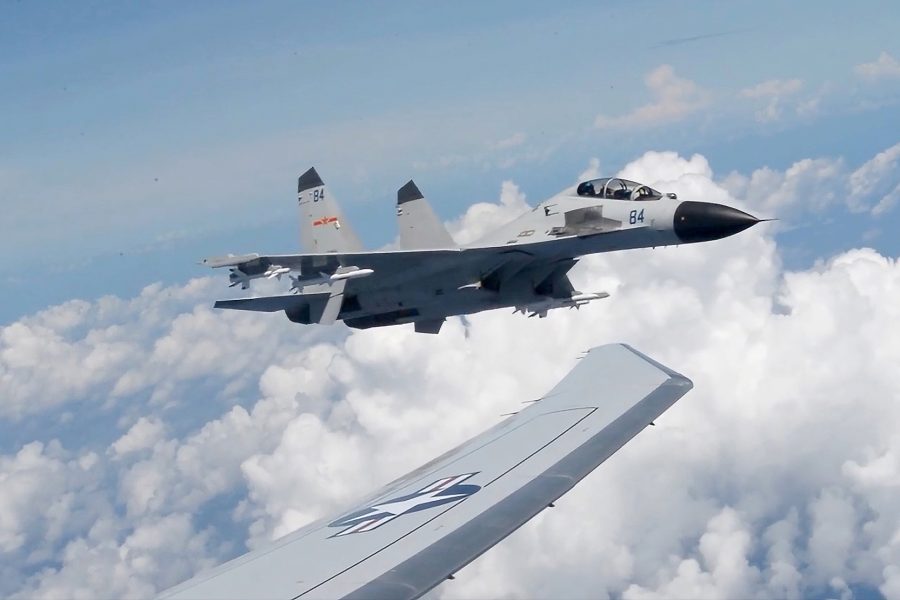The U.S.’s top military officer spoke with his Chinese counterpart on Dec. 21, the first senior-level military-to-military talks between the two countries in more than a year, the Pentagon said.
In a video call, Chairman of the Joint Chiefs of Staff Air Force Gen. Charles Q. Brown Jr. spoke with People’s Liberation Army Chief of the Joint Staff Department Gen. Liu Zhenli.
Brown emphasized the need for more communications between the two sides as the number of risky aerial intercepts and maritime incidents between the U.S. and its allies and the Chinese military increases, according to a readout provided by the Joint Staff.
“Gen. Brown discussed the importance of working together to responsibly manage competition, avoid miscalculations, and maintain open and direct lines of communication,” the Joint Staff readout stated. “Gen. Brown reiterated the importance of the People’s Liberation Army engaging in substantive dialogue to reduce the likelihood of misunderstandings.”
Between the fall of 2021 and the fall of 2023, the Pentagon says there have been more than 180 “coercive and risky air intercepts” of U.S. military aircraft by the Chinese military. In October, a Chinese fighter came within 10 feet of a U.S. Air Force B-52 Stratofortress at night in what the U.S. military said was a particularly dangerous incident.
The top generals’ call follows a meeting in November between U.S. President Joe Biden and Chinese leader Xi Jinping outside of San Francisco in which the two leaders pledged to restore military-to-military communications. The last time a top Pentagon leader spoke with their Chinese counterpart was in November 2022, when Secretary of Defense Lloyd J. Austin III spoke with the Chinese defense minister, a post that is currently vacant.
The U.S. expects China to name a new defense minister in the spring, a U.S. defense official told Air & Space Forces Magazine.
Relations between the two countries have grown steadily more tense in recent months, driven by Beijing’s anti-American rhetoric; the Biden administration’s efforts to curb China’s access to advanced U.S. semiconductor technology; a Chinese spy balloon that traversed the continental United States in early 2023, continued provocative actions by China towards vessels and aircraft in and over the South China Sea; an August 2022 visit to Taiwan—the self-governing democracy China views as a rebel province—by then-Speaker of House Nancy Pelosi (D-Calif.); and U.S. arms sales to Taiwan.
“The two military leaders discussed a number of global and regional security issues,” Joint Staff spokesperson Navy Capt. Jereal Dorsey added.
Despite the high-level discussion, the U.S. is pushing for more regular communication to avoid miscalculation in a crisis. In particular, U.S. Indo-Pacific Command boss Navy Adm. John Aquilino told reporters in October he has repeatedly attempted to talk to the commanders of his Chinese counterparts, the commanders of the PLA Eastern and Southern Theater Commands, for the past two years, but none of those requests have been accepted.
More formal mechanisms for discussions have also been frozen, such as Defense Policy Coordination talks and Military Maritime Consultative Agreement meetings, which are designed to ensure safety at sea—both sets of talks last occurred in 2021. Those talks are expected to resume in the future, according to a DOD official.
“Gen. Brown reaffirmed the importance of holding the bilateral Defense Policy Coordination Talks, holding Military Maritime Consultative Agreement talks, and opening lines of communication between the Commander of United States Indo-Pacific Command and the commanders of the PLA Eastern and Southern Theater Commands,” the Joint Staff said. “The Chairman regularly communicates with Chiefs of Defense across the world and remains open to constructive dialogue with the PRC.”


